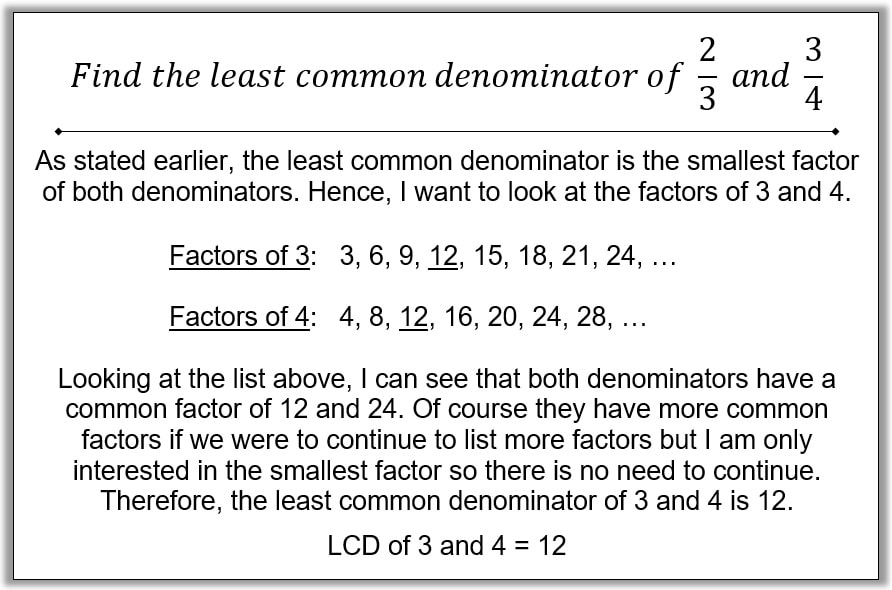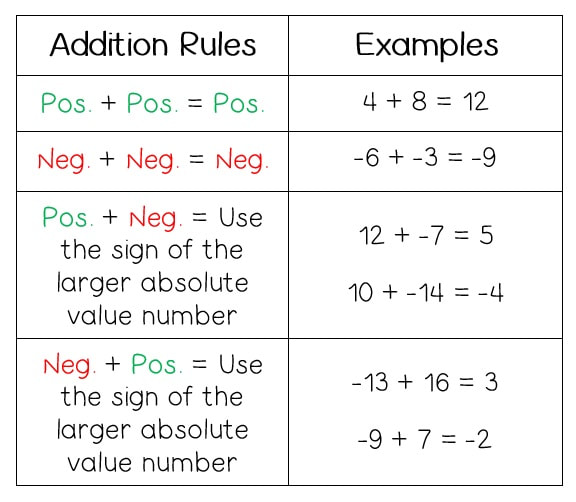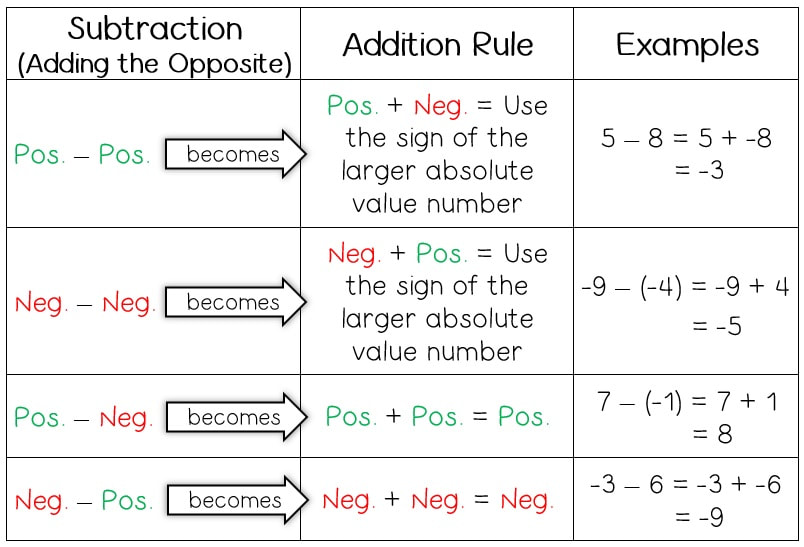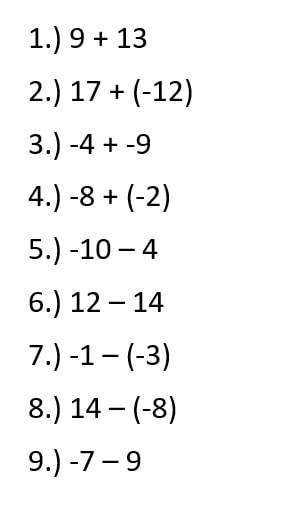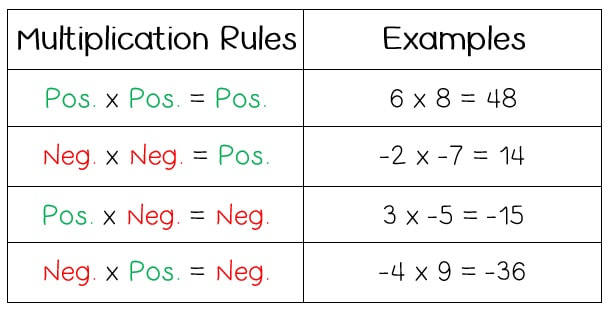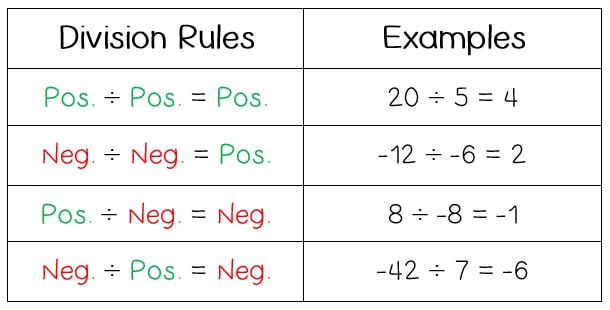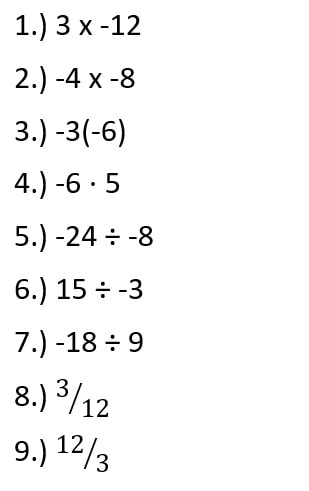Objectives:
- Determine the sum or difference of fractions including negative fractions.
- Determine the least common multiple of two numbers.
- Convert a mixed number into an improper fraction, and vice versa.
- Reduce or simplify a fraction to its lowest terms.
What is a least common denominator (LCD)?
Given two denominators, the least common denominator is the smallest factor of both numbers that divides into each number evenly without a remainder. Let's look at an example:
Given two denominators, the least common denominator is the smallest factor of both numbers that divides into each number evenly without a remainder. Let's look at an example:
Now that we know how to find the least common denominator of two fractions, we can
Why are integers important?
Integers play an important role in our everyday life. Without integers, we wouldn't have a way to keep track of numerical values. We use integers when we go grocery shopping, balancing our checkbooks, checking the temperature, and etc. They're everywhere! Think about the ways that you use integers!
Integers play an important role in our everyday life. Without integers, we wouldn't have a way to keep track of numerical values. We use integers when we go grocery shopping, balancing our checkbooks, checking the temperature, and etc. They're everywhere! Think about the ways that you use integers!
Adding and Subtracting Integers
We can add integers by using the addition rules. These rules are:
I like to remember that when adding the "same sign", I will keep the sign. Hence, if I am adding two positive numbers together then I will keep the sign positive. Same goes for when adding two negatives together. I will keep the negative sign.
Subtracting integers is very similar to adding integers. This is because when we subtract integers, we will "add the opposite". This changes the problem to an addition problem. Let's look at the following examples!
Subtracting integers is very similar to adding integers. This is because when we subtract integers, we will "add the opposite". This changes the problem to an addition problem. Let's look at the following examples!
Examples
Simplify by performing the given operation:
Multiplying & Dividing Integers
Now, we will move onto multiplying and dividing integers. Multiplying integers is similar to dividing integers because when the "same sign" is being multiplied or divided, then the result will be positive. The multiplication or division of "opposite signs" will result in a negative. Let's look at some examples:
Examples
Simplify by performing the given operation:
Quiz
You will take the quiz after you have researched and taken notes on the operations on integers.
CLICK HERE FOR QUIZ
CLICK HERE FOR QUIZ
(C) 2017 MATH IN DEMAND
